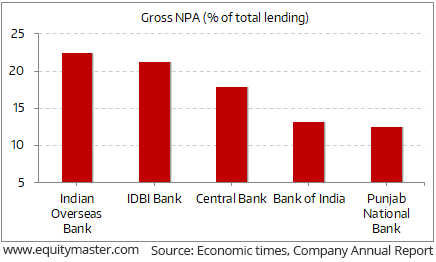- Home
- Todays Market
- Indian Stock Market News July 18, 2017
Indian Indices Extend Losses; FMCG Sector Down 6% Tue, 18 Jul 11:30 am
After opening the day on a negative note, the Indian share markets witnessed further losses and went on to trade in the red. Sectoral indices are trading on a negative note with stocks from the FMCG sector and the energy sector witnessing maximum selling pressure.
The BSE Sensex is trading down 247 points (down 0.8%) and the NSE Nifty is trading down 55 points (down 0.6%). Meanwhile, the BSE Mid Cap index is trading flat, while the BSE Small Cap index is trading down 0.1%. The rupee is trading at 64.32 to the US$.
Share price of ITC is witnessing maximum selling pressure in the FMCG space today. Most of this brunt is seen after the GST Council amended the cess on cigarettes.
The Goods and Services Tax (GST) Council has decided to increase the cess on cigarettes to offset reduced tax revenue from the product following the GST rollout. Accordingly, the tax burden on cigarettes will go up by Rs 4.8-7.9 per 10 sticks, depending on their length and whether or not they have filters.
As per Finance Minister Arun Jaitley, the increase in cess is expected to help the government raise around Rs 50 billion of additional tax revenue which would have been pocketed by cigarette companies.
The stock of ITC had surged to a record high lately after the announcement that GST rates were reducing the tax on cigarettes by around 6-7% compared to that in the earlier regime. However, with the above development, the tax incidence will be the same as before and accordingly the rates will be at par with those under the older regime.
For investors, this comes as a reminder for considering the impact of regulatory risks such as the above while considering stocks for investment.
We, at Equitymaster, rigorously follow Equitymaster Risk Matrix (ERM®). The risks are objectively evaluated via the ERM® score. This helps us keep our analysis objective and casts aside all pre-conceived bias.
Speaking of GST, the Goods and Services Tax became the order of the day at the start of this month. And all these months we have been subjected to a relentless propaganda by the government and the supporters of the GST, on how it will change our world, only for good.
Our colleague Vivek Kaul, has studied the finer aspects of the GST and predicted what could go right and wrong.
Download his special report - The Good, the Sad and the Terrible (GST).
In other news, the Gujarat High Court dismissed Essar Steel's plea against the Reserve Bank of India (RBI) directive asking lenders to initiate bankruptcy proceedings against the debt-laden company, observing that the regulator and banks are empowered to do so.
Earlier, last week, the RBI had informed the Gujarat High Court that Essar Steel was far from reaching its restructuring stage, implying a counter against the company's claim. The central bank said it had not treated the company differently and said it has followed a statutory process to resolve the bad loans issue.
The above case comes under the new Insolvency and Bankruptcy Code (IBC), which aims at quick resolution and recovery of non-performing assets (NPAs) for most of the banks.
The bad loans at Indian banks have only been rising, as can be seen from the chart below:
Rising Bad Loans at Indian Banks
Gross non-performing assets (GNPA) of Indian banks rose from 9.2% in September 2016 to 9.6% in March 2017. GNPA refers to the total value of loans on which interest and principal income has not been received by the bank for more than ninety days. For some banks, the ratio of GNPAs to total lending is more than 20%. This means more than Rs 20 out of every Rs 100 lent is at the risk of not coming back.
The RBI expects the average GNPA ratio to increase to 10.2% by March 2018. It indicated that if macroeconomic conditions worsen, this number could go up.
The problem of bad loans is indeed quite severe and when we compare it with other global peers it looks daunting.
Out of the ten major economies facing NPA problems, India is ranked seventh.
The overhang of bad debts has not only hit the bank's profitability, but has also restricted their loan book growth.
For information on how to pick stocks that have the potential to deliver big returns, download our special report now!
Read the latest Market Commentary



Equitymaster requests your view! Post a comment on "Indian Indices Extend Losses; FMCG Sector Down 6%". Click here!
Comments are moderated by Equitymaster, in accordance with the Terms of Use, and may not appear
on this article until they have been reviewed and deemed appropriate for posting.
In the meantime, you may want to share this article with your friends!